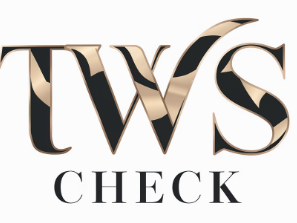How Fintech Loans Are Revolutionizing the Loan Application Process
Fintech loans are rapidly transforming the loan application process, leveraging modern technology to make acquiring personal loans, student loans, and improving credit scores faster and more secure. By reducing paperwork and minimizing errors, fintech offers a streamlined, efficient alternative to traditional loan management systems which often suffer from slow disbursement, inefficient collection methods, and a lack of transparency [Webpage 1]. The advent of fintech is not only changing how loans are processed but also revolutionizing the way individuals borrow and repay money, from personal to student loans, thereby enhancing the overall loan disbursement and collection landscape [Webpage 1].
This transformation is indicative of a broader shift in the financial industry, one where fintech loans are addressing long-standing pain points such as slow disbursement processes, inefficient collection practices, and the opaque nature of traditional loan management. As fintech continues to evolve, it promises to further optimize loan application and approval processes, improve methods for assessing credit scores with AI and big data, and offer more personalized loan terms [Webpage 1]. With these advancements, the future of borrowing looks brighter, more efficient, and more user-friendly than ever before, setting a new benchmark for lending and borrowing in the digital age.
Streamlining Application and Approval Processes
Fintech firms are revolutionizing the loan application and approval processes by integrating advanced technologies that significantly enhance efficiency and user experience. Here are some key innovations:
- Automation of Underwriting and Risk Assessment: By automating the underwriting process, fintech companies expedite the personal loan application process, profile risk more accurately, and reduce operating costs.
- Enhanced Speed in Application and Disbursement: Fintech platforms enable faster application, approval, and disbursement times compared to traditional banks, with loans often directly deposited into borrowers’ accounts, eliminating the need for physical checks.
- AI and Big Data in Credit Scoring: Utilizing AI, fintech systems can quickly assess credit scores and other relevant data, enabling faster and more accurate approval times.
- Automated Communications: Systems are set to send automatic reminders for due payments and can create personalized payment plans, enhancing customer experience and payment efficiency.
- Proactive Risk Management: Through data analytics, fintech can predict potential default risks, allowing for proactive measures to mitigate such risks.
- Security Enhancements: Advanced technology is employed to secure personal and financial information, safeguarding against data breaches and fraud.
- Efficiency in Loan Origination: Automated decision rule technologies and cloud-based integrations streamline the loan origination process by providing immediate access to necessary data sources for verification and by removing manual tasks, thereby speeding up the process and reducing errors.
- User-Friendly Loan Management: Platforms allow users to easily create and modify decision rules without needing technical programming knowledge, making it simpler to manage loans.
- Operational Efficiency: Fintech lending solutions not only speed up the loan approval process but also provide tools for borrowers to monitor their financial health, compare rates, and manage payments efficiently.
These advancements collectively contribute to a streamlined, more accessible, and less error-prone loan application process, reflecting a significant shift from traditional methods to a more modern, digital approach.
Enhancing Credit Scoring with AI and Big Data
Fintech’s integration of AI and big data is profoundly transforming credit scoring processes, making them more accurate and inclusive. Here’s how these technologies are being applied:
- Advanced Algorithms for Credit Assessment: AI-driven algorithms and machine learning models are crucial in evaluating creditworthiness. These technologies provide a more precise analysis by incorporating a variety of data points beyond traditional credit information.
- Utilization of Alternative Data: Platforms like LendingClub are pioneering the use of non-traditional data to assess credit scores. This approach often reclassifies borrowers who might be considered subprime by conventional standards into more favorable loan categories, thus offering them lower interest rates.
- Improving Risk Detection: AI algorithms excel in identifying patterns that may indicate fraudulent activities such as identity theft or loan stacking. This capability enhances the security of lending processes and protects both the lender and the borrower.
- Enhancing Fair Lending Practices: By analyzing vast amounts of data, AI helps in ensuring fairness in lending. It identifies and mitigates biases within credit scoring models, aligning with regulatory requirements and promoting ethical lending practices.
- Real-Time Credit Risk Assessment: Companies like Affirm use AI to evaluate credit risks in real-time during transactions. This instant assessment allows for immediate financial decisions, beneficial in dynamic market conditions.
- Financial Inclusion: Big data and AI enable firms like Ant Financial to create sophisticated credit profiles based on diverse data sources, including online behavior and social networks. This approach is particularly effective in extending financial services to underserved populations who lack traditional credit histories.
- Cost Reduction and Efficiency: The adoption of AI and big data not only enhances the accuracy of credit assessments but also reduces the operational costs associated with these processes. Lower costs can then be passed on to consumers as savings on credit products.
These advancements underscore a significant evolution in how creditworthiness is determined, offering a more personalized, secure, and fair lending landscape.
Personalized Loan Offerings
Fintech is significantly enhancing the personalization of loan offerings, catering to diverse borrower needs with innovative solutions. Here are some of the key advancements:
- Instant Loan Disbursement and Management: Fintech platforms enable the immediate transfer of funds to borrower’s accounts and integrate seamlessly with accounting systems for automated repayments, simplifying the financial management process for users [Webpage 1].
- Mobile Management Tools: Borrowers benefit from mobile applications that facilitate easy management of loans, promoting timely repayments and enhancing user engagement [Webpage 1].
- Tailored Solutions for Varied Needs: Companies like Beyond Finance offer customized debt resolution services for different types of debt, including personal loans and credit cards, while Scratch Financial provides specialized medical financing options accessible via smartphones or computers.
- Innovative Banking Services: Institutions such as Leader Bank have incorporated technology like video banking to deliver comprehensive services ranging from personal banking to loans, making financial services more accessible and convenient.
- Technology-Driven Debt Collection: January utilizes a tech platform to assist lenders in engaging with borrowers who have fallen behind on payments, offering them practical solutions to get back on track.
- Home Lending and Equity Access: Platforms like Valon and Coviance revolutionize traditional home lending by offering a streamlined, digital-first approach, reducing delays and making it easier for borrowers to access equity .
- Securities-Based Lending Solutions: Supernova Technology provides automated digital solutions that support securities-based lending, enhancing the efficiency and accessibility of financial services for banks and brokerages.
- Flexible Education Financing: Stride Funding offers innovative financing options such as income share agreements, allowing students to access education without the upfront financial burden.
- Software Expenditure Financing: Gynger provides upfront funding for companies, facilitating the acquisition of necessary technology through more manageable financial arrangements.
- AI-Driven Personalization: AI technology analyzes customer data to craft loan offers that are closely aligned with individual financial situations and preferences, ensuring a highly personalized customer experience.
These developments underscore fintech’s role in not only simplifying loan application processes but also in personalizing financial solutions to meet the unique needs of a diverse client base.
The Rise of Peer-to-Peer Lending Platforms
Fintech’s introduction of peer-to-peer (P2P) lending platforms has revolutionized the way individuals and businesses access funds. By directly connecting borrowers with lenders, these platforms bypass traditional financial intermediaries, offering several advantages such as competitive interest rates for borrowers and attractive returns for lenders 1. The concept, which began with platforms like Zopa in the UK and Prosper in the US in 2005, has grown significantly, diversifying into areas beyond consumer loans to include business funding and student loan refinancing.
The growth of P2P lending has been supported by venture capital, driving innovations and expanding the market significantly. Today, P2P lending includes not just loans but also real estate crowdfunding, impact investing, and specialized business lending, attracting both individual and institutional investors. This expansion is part of a broader fintech ecosystem that now features a mature P2P lending sector with a diverse range of offerings.
Technological advancements play a crucial role in this sector. Data-driven underwriting processes help mitigate risks for investors, while developments like blockchain technology improve the security and efficiency of transactions. Regulatory frameworks continue to evolve, balancing the need for innovation with consumer protection and market stability.
The global P2P lending market is experiencing rapid growth, with projections suggesting it could reach a valuation of USD 621.3 billion by 2032. This growth is driven by factors such as lower borrowing costs, higher returns for investors, and the convenience of online platforms. As the market matures, partnerships and acquisitions among major players like Prosper Marketplace, OnDeck, and SoFi are further shaping the industry, enhancing its stability and appeal to a broader audience.
Impact on Lending Efficiency and Operational Costs
Fintech innovations have significantly enhanced operational efficiencies and reduced costs in the lending sector. Key impacts include:
- Streamlined Capital Access: Fintech has broadened capital access for small businesses and individuals previously underserved by traditional banks, facilitating economic growth and entrepreneurship [Webpage 4].
- Enhanced Transaction Efficiency: By integrating advanced digital solutions, fintech has made banking transactions faster, more convenient, and cost-effective, particularly through digital banking and mobile payment applications [Webpage 4].
- Cost Efficiency Focus: Research indicates that fintech primarily boosts cost efficiency, optimizing expenses more significantly than profit efficiency.
- Role of Absorptive Capacity: Absorptive capacity significantly enhances cost efficiency while potentially reducing profit efficiency, acting as a crucial intermediary in the fintech sector.
- Blockchain in Lending: Implementing blockchain technology streamlines lending processes, heightens transparency, and curtails fraud, leading to substantial cost reductions.
- Cloud-Based Scalability: Digital and cloud-based platforms enable fintech firms to swiftly scale operations, decreasing entry barriers and operational costs in the lending market.
- Impact on Traditional Financial Institutions: The rise of fintech has adversely affected the profitability of conventional financial institutions by diminishing interest income and escalating operational expenses 6.
- Growth and Regulatory Challenges: The rapid expansion of fintech, exemplified by the growth of China’s fintech sector, poses challenges in regulatory fairness, especially impacting traditional banks with stricter regulations 1021.
- Technological Innovations and Cost Reductions: Continuous innovation in financial technologies, such as AI and Big Data, has drastically improved operational efficiencies by automating routine tasks and reducing manual labor, thereby accelerating processing times and cutting costs 1221.
- Microfinancing and Financial Inclusion: Fintech has democratized financial services, providing small loans to entrepreneurs and individuals in underserved communities, fostering financial inclusion and development [Webpage 4].
These points collectively illustrate how fintech is reshaping the financial landscape by enhancing operational efficiencies and reducing costs, thereby transforming traditional lending practices.
Future Trends in Fintech and Loan Applications
The landscape of fintech and loan applications is poised for profound transformation with the integration of cutting-edge technologies and innovative financial practices. Here’s a glimpse into what the future holds:
Emerging Technologies and Market Growth
- Blockchain and Smart Contracts: Enhancing security and transparency, blockchain technology offers a decentralized platform that records every transaction, making it accessible and reducing disputes 24.
- AI and Big Data: These technologies are pivotal in enhancing customer experiences through personalized services and improving financial risk management by detecting fraud and unusual patterns swiftly 12.
- Growth Projections: The fintech market is estimated to reach a staggering $698.48 billion by 2030, underscoring the sector’s rapid expansion and significant impact on global financial services 25.
Regulatory and Ethical Advances
- RegTech and Compliance: AI-driven solutions are crucial for monitoring regulatory changes, ensuring compliance, and automating reporting processes, which is essential as the sector grows 12.
- Ethical Lending Policies: Transparency, fairness, and responsibility are key trends, focusing on clear communication of loan terms and ethical evaluation of loan applications 24.
Integration and Personalization in Lending
- Embedded Finance and Open Banking: These trends signify a shift towards more integrated and user-centric financial services, allowing for seamless financial transactions and more personalized banking experiences 25.
- Personalized Loan Solutions: Leveraging AI, lenders can offer tailored financial products that meet individual needs, enhancing customer satisfaction and financial inclusivity 12.
Decentralized Finance and Its Economic Impact
- DeFi’s Role in the Economy: Decentralized finance is set to revolutionize financial interactions without the need for traditional intermediaries, potentially reshaping the global economic landscape 22.
Market Dynamics and Consumer Behavior
- Loan Volume and Consumer Debt: With an expected rebound in loan volumes and increasing consumer debt, particularly credit card and student loans, there is a significant potential for growth in personal and buy-now-pay-later loans 13.
This overview of future trends highlights the dynamic and rapidly evolving nature of fintech, promising a more efficient, secure, and customer-focused lending environment.
Conclusion
As the fintech revolution reshapes the landscape of loan applications, key innovations in automation, AI, and big data analytics stand at the forefront, offering a more streamlined and efficient borrowing experience. The integration of these technologies has not only simplified the loan application process but also enhanced credit scoring methods, making them more inclusive and fair. Such advancements signal a significant departure from traditional lending practices, promising a future where financial services are more accessible, personalized, and secure for borrowers.
The potential implications of these fintech developments extend far beyond mere convenience, heralding a new era of economic democratization and financial inclusion. By reducing operational costs and improving lending efficiency, fintech firms are poised to support broader segments of the population, including those previously underserved by traditional financial institutions. As we move forward, the continued evolution and integration of fintech innovations will likely unlock new avenues for growth and opportunity in the global financial landscape, revolutionizing how we think about and engage with lending and borrowing in the digital age.
FAQs
1. How is fintech transforming the way loans are provided? Fintech companies are revolutionizing the lending industry by offering personalized loan solutions. They use sophisticated algorithms and modern technologies to analyze specific data about borrowers, which allows them to provide flexible terms and rates. For instance, Wisetack presents an attractive alternative to conventional credit cards by tailoring its offerings.
2. What impact is fintech having on financial services? Fintech is significantly altering financial services by improving access for the underbanked and unbanked populations. It democratizes access to financial services in ways that traditional banking has not achieved, making it easier for these groups to avail themselves of financial products and services.
3. In what ways does fintech facilitate the lending process? Fintech enhances the lending process by employing digital tools that enable lenders to offer loans online, either through websites or mobile applications. The fintech lending sector encompasses various business models, such as peer-to-peer lending, mortgage lending, business loans, and loans for investors.
4. What does the fintech revolution entail? The fintech revolution refers to the expansion and evolution of traditional banking services brought about by financial-technology companies. These companies are changing how customers experience banking, modernizing products and services, and often acting as intermediaries between customers and banks. This shift in the financial landscape is ongoing and shows no sign of abating.









